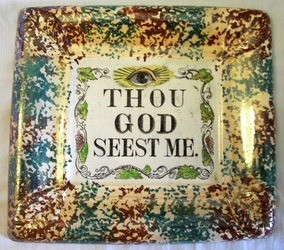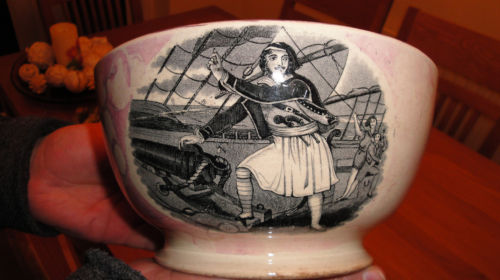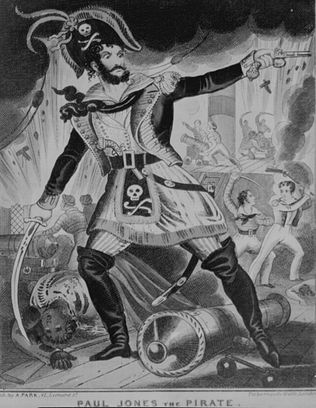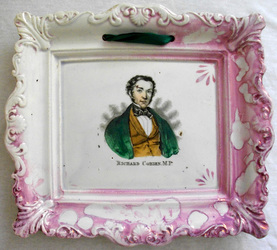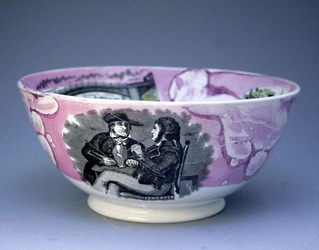|
2/29/2012 0 Comments Albion Pottery bridge plaqueI recently found the plaque below on the Ruby Lane antiques website. My thanks to Patricia Funt for allowing me to include it here. It has the Albion Pottery impressed mark, with a G&A for Galloway and Atkinson, 1864. The plaque is similar to a pair that came up at auction a year or so ago. The unusual mottled border might not be to everyone's taste – it reminds me of the sort of wallpaper you might discover under 5 or 6 layers when stripping the hallway of a Victorian house. But if you fancy the bridge plaque, which is undoubtedly rare, it is still for sale on the links above.
0 Comments
2/28/2012 1 Comment Dixon partnership datesSome time ago Norman Lowe contacted me with some new evidence regarding the dates of the Dixon partnerships. According to Baker the chronology of partnerships is: 1807 to 1812, John Phillips 1813 to 1819, Phillips & Co and/or Dixon & Co 1820 to 1826, Dixon, Austin & Co 1827 to c1834–39, Dixon, Austin, Phillips & Co c1834–39 to 1865, Dixon, Phillips & Co Norman has discovered a notice in the London Gazette, December 24, 1818, as follows: Notice is hereby given, that the Partnership heretofore subsisting between us, John Phillips, Robert Dixon, William Austin, and Thomas Henderson, as Manufacturers of Earthenware, at Sunderland near the Sea, in the County of Durham, under the stile or firm of Dixon, Austin, Phillips and Co, the Sunderland Pottery, is this day dissolved by mutual consent, so far as regards the said John Phillips; and that the business will in future be carried on by us the undersigned, Robert Dixon, William Austin, and Thomas Henderson alone, in Partnership, at Sunderland aforesaid, under the stile or firm of Dixon, Austin, and Co. the Sunderland Pottery. As witness our hands this 17th day of December 1818. Norman suggests that we can now improve the dates to the following: 1807 to 1812, John Phillips 1813 to 1818, Dixon, Austin, Phillips & Co (marks would include Dixon & Co 1813, and Phillips & Co 1813) 1819 to c1834-1839, Dixon, Austin & Co c1834-1839 to 1865, Dixon, Phillips & Co I can't disagree with his logic. Look out for Norman's article on early Sunderland Pottery in the Northern Ceramic Society newsletter, which should be out in March. I'll finish with a rare pink lustre plaque with the Dixon, Austin & Co impress that I recently bought on eBay. Huge thanks to Norman Lowe for sharing his discovery.
Thanks to Shauna Gregg at the Sunderland Museum for providing information about the Crimean and train plaques (below). They came into the collection in 2002, and are catalogued as 'attributed to Garrison'. I'm 99.9% certain now they aren't Garrison (Dixon), and that they belong to our group of Adams' reproduction plaques. I have enlarged the section on Adams Pottery on the Reproductions page.
On a separate note, thanks also to Donald H Ryan for suggesting that this website be included in the British Library Websites Archive Scheme, and to Maureen Pennock from the British Library. Hopefully MSTP will be included in the scheme in the near future. 2/13/2012 0 Comments Paul Jones or Jack Crawford?Please read my previous post first. Thanks to Ian Holmes for telling me about a bowl that recently appeared on eBay. The seller suggests that the transfer of the sailor beside the cannon depicts Jack Crawford. You can see why. Jack Crawford, the hero of Camperdown, shinned up the mast of HMS Venerable under intense gunfire and nailed back Admiral Vernon's flag, lest the enemy think the ship had surrendered. In the image below, the sailor is pointing upwards and climbing on a cannon, while two men in the background pull at a rope trying to hoist something – the flag? For titled examples of transfers of Jack Crawford, see Ian's website. Aged 22, Jack generally looks more boyish than in the transfer above. He seems more heavily armed in this transfer than might be conducive to climbing. But the other elements might fit Jack Crawford (though why would he need to climb if the flag could be hoisted?). One of the commercial advantages of an untitled transfer is that it can be sold as whatever the buyer would like it to be. Perhaps 'E Towning' (see below) was Scottish or American and the pottery decided to restyle the transfer as Paul Jones? However, it's also possible the two men in the background were always hoisting the Jolly Roger, and that a pirate, with his finger raised, is just about to give the signal to fire. Whatever the subject of the transfer, on the bowl it again pairs with the Sailor's Return (though it is impossible to say for certain from the photos whether the bowl and plaques come from the same transfer plate). Interestingly the bowl also has a view of the Wear Bridge. At first I got excited, thinking I'd found another link between the transfers that appear on the larger sized plaques and John Carr. (See a similar transfer attributed to John Carr below left.) But in fact, the transfer on the bowl is more similar to the version that appears on Albion Pottery plaques (below right). Note the shading of the sails and the two lines of text in the title. I'm not sure we are any further on. I'd love better photographs of the bowl if the new owner happens to be reading. That way we might be able to firm up the link with the Albion Pottery.
2/9/2012 0 Comments Paul JonesIn December I wrote that if the owner of the plaques below got in touch, it would make my Christmas. Sadly they didn't. In case you've been wondering who Paul Jones might have been (the painted title of the right plaque above), take a look at this page on Wikipedia. He was the 'first naval hero of the American Revolutionary War'. Perhaps unsurprisingly, the British caricatured him as a pirate (see below). Recently the following pair of plaques came up at auction. Congratulations to their new owner, I'm green with envy. The plaques are of an unusually large size (c 215 x 238 mm). I've blogged about this plaque form previously, but as yet got no closer to identifying the pottery. Richard Cobden appears on these larger plaques (below left), and also on the smaller rectangular plaques I've attributed to Scott (below centre). The verses are very distinctively engraved, and (unusually) have the bible reference at the top. The verses appear on later plaques with the John Carr & Sons impress. Cobden also appears on later Carr-attributed items (below right). Take a look at the bowl below, which has the 'Paul Jones' transfer. The bowl was recently in John Howard's stock (now sold). On the other side of the bowl is the 'Pensioner's Yarn' transfer, which as far as I know, is peculiar to Scott. The obvious thought is that Scott made these larger sized plaques (c1850), and that the transfer plates with the religious verses and Richard Cobden later found their way to Carr (c1860). The 'Paul Jones' transfer doesn't appear on Carr items as far as I know. Richard Cobden fell from public grace in the 1850s for opposing the Crimean War. This might explain why Scott would relinquish the Cobden transfer plate. But why would he allow the verse transfer plate to fall into the hands of a competitor? What's more, these verses with the biblical reference at the top don't appear on any of the other plaque forms I've attributed to Scott. Perhaps someone at Scott's left Sunderland to work in North Shields, and took a couple of transfer plates with him. It rankles with me that we may never know! P.S.The verses below accompany the Richard Cobden transfer (the left transfer is on the reverse of the jug above). They are, therefore, likely on the same transfer plate. The blue corners are a feature associated with Scott. See the May peace and plenty page for more examples.
|
AuthorStephen Smith lives in London, and is always happy to hear from other collectors. If you have an interesting collection of plaques, and are based in the UK, he will photograph them for you. Free advice given regarding selling and dispersal of a collection, or to those wishing to start one. Just get in touch... Archives
February 2022
AcknowledgementsThis website is indebted to collectors, dealers and enthusiasts who have shared their knowledge or photos. In particular: Ian Holmes, Stephen Duckworth, Dick Henrywood, Norman Lowe, Keith Lovell, Donald H Ryan, Harold Crowder, Jack and Joyce Cockerill, Myrna Schkolne, Elinor Penna, Ian Sharp, Shauna Gregg at the Sunderland Museum, Keith Bell, Martyn Edgell, and Liz Denton.
|



